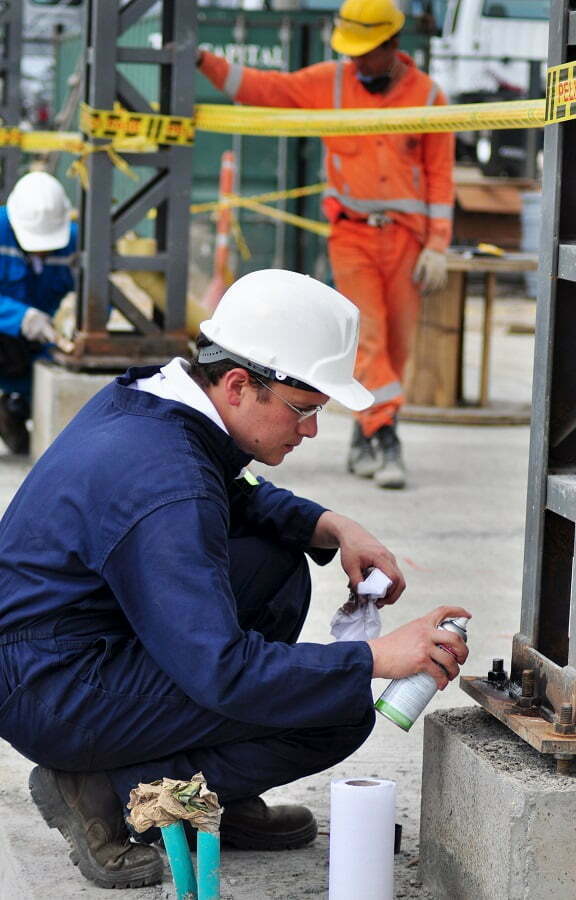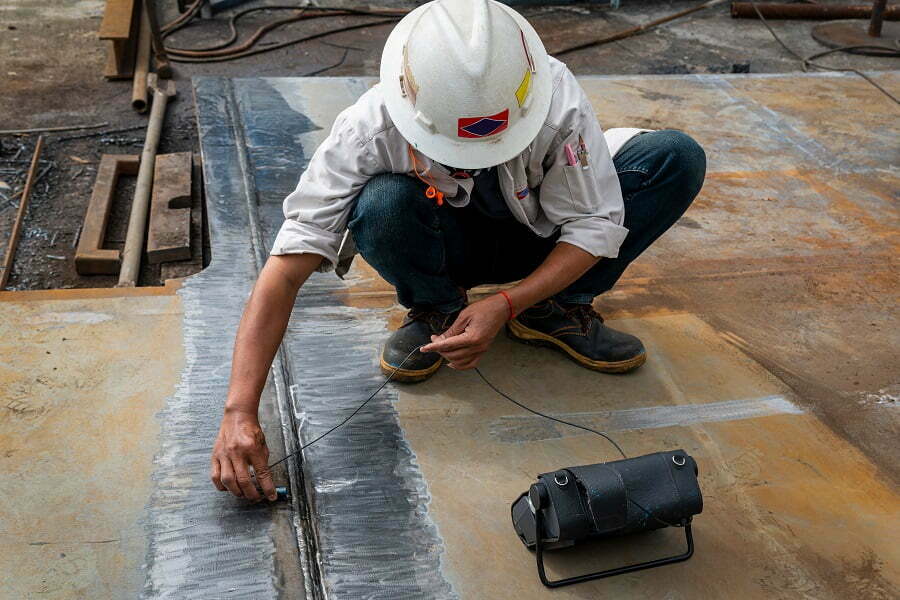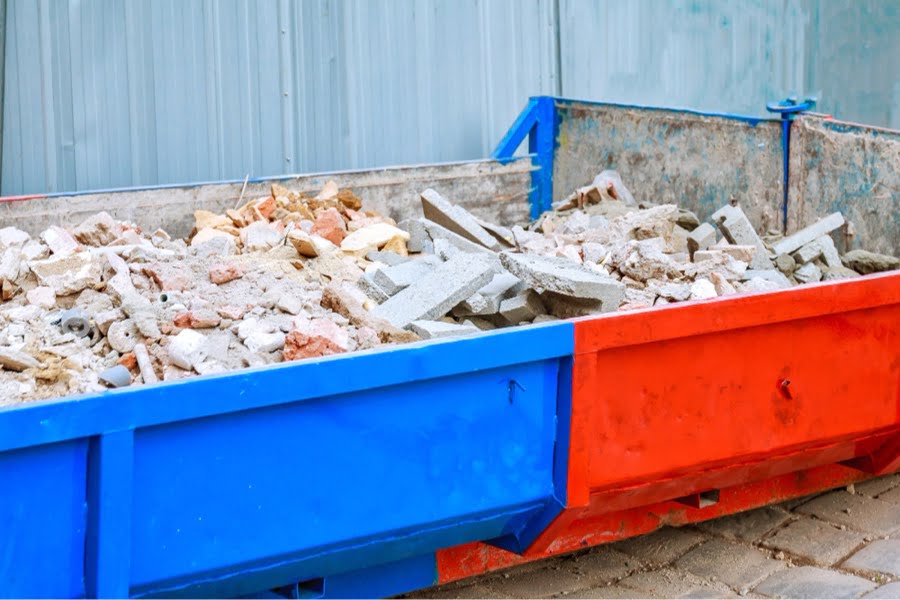Last updated on
Non-destructive testing (NDT), also known as non-destructive inspection (NDI) or non-destructive evaluation (NDE), is an analysis technique used by industries. It evaluates any characteristic differences in the properties of a material, component, or structure, and stops these without causing any damage to the original part.
The concept of NDT started during the Industrial Revolution in the 18th century. This was when the manufacturing processes boomed, and we saw the continued production of many parts at once. Thus, this necessitated visual inspection. NDT methods and technologies have advanced over time, and there’s now ultrasound for assessment, radiography, penetrants, and magnetic particles, among others. Moreover, each NDT method and application requires the appropriate equipment to use. This will ensure that everything runs as it should while complying with standard procedures and regulations.
Today, NDT is a crucial component in the aerospace, automotive, power, marine, oil, and gas industries. It’s preferred for buildings and constructions because the method is non-invasive and also prevents malfunctions. This is made possible through the various non-destructive test methods used to determine the moisture content of walls, know how appropriate the building and construction material is, and detect any defects, among other tasks. Read on to learn more about how NDT helps promote the sustainability of buildings and constructions.

Ensures No Damage Are Done
The process does not leave damaged pieces. Should there be a problem, an item is repaired and not replaced.
Guarantees Safety
NDT ensures that equipment and structures are safe by determining their strength, structural integrity, suitability, reliability, and overall condition. This testing method also secures the safety of operators to prevent injuries or fatalities, thus, improving productivity.
Attests to Accuracy
The method is accurate because the tests can be repeated and used together to correlate results. In other words, the equipment can be subjected to a series of non-destructive tests to remove any oversight.
Assures Cost-Effectiveness
As mentioned earlier, NDT determines the overall condition of an asset. Hence, start with preventive maintenance once the test results are out. This will save money in the long run. NDT also enables you to repair related equipment before costly problems arise.
Verifies Welding Procedures

The method is used for testing to ensure that the welding process is completed based on the specified levels as per quality control measures. One of the tests performed ensures the compatibility of the materials used to prevent welding defects.
Ensures Non-Interference With Business Operations
NDT is performed without the need to halt business operations. This is possible because the operators work in a framework where they can internally compile quality control data to ensure that there are no discrepancies in the performance of assets. Therefore, there are no incurred because of having to shut down operations altogether.
Conducts Exhaustive Testing
This testing allows trying out every product or component instead of selective sampling, which will give results of only a portion of the parts. This is because the testing doesn’t alter substances. NDT can also be done at various development stages and construction, allowing identification and fixing of any problems before the project is completed.
Performs Non-Invasive Assessment
NDT allows the assessment of stability and mechanical strength of assets without making them unfit for service or ruining the components. In other words, it’s possible to determine the structural integrity of assets and products manufactured with total confidence that there will be no negative consequences with the procedures.
Allows for More Convenient Inspections
Current NDT devices, like eddy current, have long-lasting rechargeable batteries, making them easier to move around with. They are also fully integrated to handle an inspection at acquisition, analysis, and reporting levels without needing bulky equipment or external software. This minimizes the stress of people conducting an assessment. It also improves efficiency because some devices can be held in one hand easily while the probe remains on the other hand. Smaller and more portable NDT devices make inspection possible in various environments.
Brings a Sense of Consolation
That it’s possible to conduct the tests effortlessly and avoid accidents easily makes the management feel at ease about the good things NDT can do. Workers also perform their tasks more efficiently because their safety is guaranteed. This, in turn, increases their productivity level, too.
Conducts Quality Control Checks
NDT consistently ensures high standards in everything, from raw material to the finished product. So, the outputs produced are compliant with clients and industry requirements.
Identifies Problems Early On
Component failure could result in an unexpected shutdown of the business. Meanwhile, repair or replacement could be relatively expensive. Thus, NDT is a good choice because it can identify problem areas before they become unmanageable.
Reduces Environmental Risks
NDT helps companies adhere to environmental preservation because it enables the detection of structural problems. When these problems remain undetected, they may lead to accidents or infrastructural failures that will affect the surrounding areas.
Used in Several Applications
The non-destructive tests primarily used in the general industry are penetrant liquids and magnetoscopy, which allow the best evaluation of a welded joint. In the aerospace sector, induced currents and penetrant liquids are used to maintain components during periodic checks. In addition, infrared thermography is extensively used in architectural recovery and restoration processes in the construction industry.
Enables Compliance to Regulations
NDT provides unbiased and considerably accurate results, ensuring that the various processes, assets, and products meet regulation standards of the industry.
The Takeaway
Several industries have embraced NDT as it can inspect the properties of a material without any alteration or damage. We also see it in action in various applications. Likewise, it’s a money-saving product evaluation and research technique.
However, it’s important to note that the successful application of NDT requires involving well-experienced personnel. Lack of proper experience may warrant misreading of indicators, leading to approval of a plant or building as acceptable even when it’s faulty. The importance of NDT cannot be taken for granted, considering it’s carried out at all stages, starting from construction and throughout the asset’s life cycle. Therefore, it can be used to comfortably determine the effectiveness of the asset by comparing how much it has deteriorated between each testing interval.
Related reading:
Table of Contents





